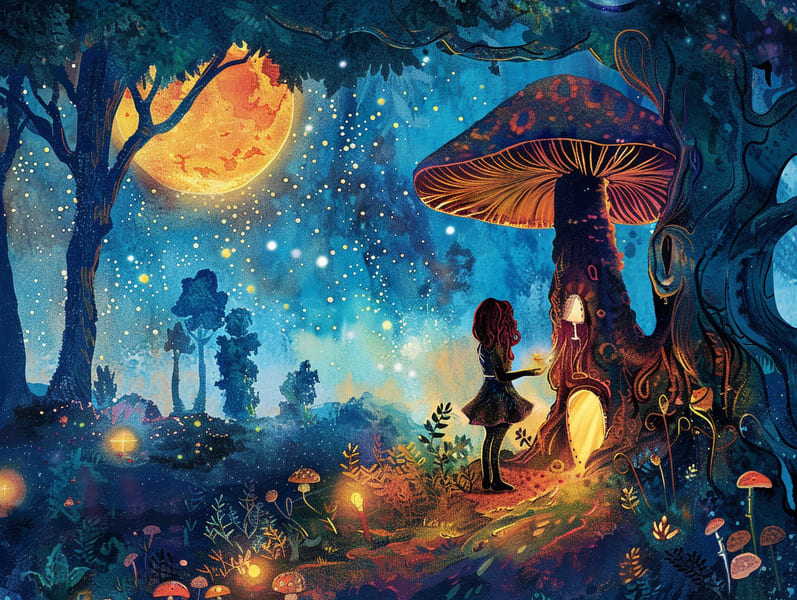The Rise of Best Fairy Tales and Their Unending Elegance.

Popular fairy tales have deep roots. These stories have been relayed from one generation to the next centuries before they were ever documented. They came from a variety of civilizations, including Middle Eastern traditions. They were initially transmitted among adults, often carrying themes and messages concerning the societal norms and beliefs of the time.
The renowned Brothers Grimm, Jacob and Wilhelm Grimm, were among the first to compile many of these beloved stories. Their collection, "Grimm's Folk Tales," included classics like "The True Bride," "The Story of Hansel and Gretel," and "The True Story of Snow White," which have since become staples in the world of iconic fairy tales. Similarly, Hans Christian Andersen's delightful tales, such as "The Little Mermaid," and "The Duckling's Story," have floated into hearts worldwide, guaranteeing their place in the pantheon of treasured fairy tales.
Despite their ancient origins, these stories remain as impactful as ever, especially as nighttime stories for kids. These charming stories are now available in many formats, including richly illustrated books, magical animations, and web-based fairy tales.
Their continued relevance can be traced to several captivating elements:
Ethical Lessons: Classic fairy tales often provide important moral lessons. Narratives like "The Wolf and the Liar" teach the merit of integrity, while "The Race of the Tortoise and the Hare" emphasize the values of tenacity and unpretentiousness. These narratives offer kids clear distinctions between right and wrong, developing their moral compass in a gentle yet lasting way.
Compassion and Insight: Old fairy tales frequently present personalities facing struggles and tests, encouraging kids to resonate with their struggles and boost their triumphs. For instance, "Beauty's Beast" emphasizes the importance of seeing inner beauty to understand the true nature of a soul, building kindness and discernment.
Cultural Recognition: Many ancient fairy tales are rich in the cultural contexts from which they arose. Understanding these narratives can provide fascinating glimpses into different beliefs, nurturing a sense of cultural understanding and perception.
Fantasy and Innovation: The whimsical elements in ancient fairy tales—magic wands—encourage children’s imaginations. These narratives transport readers to magical realms, engendering creative ideas and a sense of excitement that remains a lifetime.
Ancient fairy tales are not only captivating but also informative. They provide enchanted tools in nurturing various intellectual and emotional capacities in kids. When fairy tales are voiced, they promote linguistic abilities by showing new language items and complicated sentence structures. This practice also promotes listening skills and concentration, as kids hang on every word, keen to see what happens next.
Furthermore, conversing about the themes and characters of ancient fairy tales can cultivate analytical skills and logical thinking. Young ones are educated to discover patterns, predict happenings, and make sense of cause and effect. These contemplations also contribute to little ones reveal their thoughts and feelings, contributing to their emotional intelligence.
In today’s digital era, the prevalence of digital fairy tales has made these narratives more obtainable than ever. Web-based platforms and software make available wide arrays of popular fairy tales that can be experienced or listened to anytime, anywhere. Fairy tales read aloud are particularly prevalent, making available an interactive way for young readers to relish these delightful tales. Read-aloud books and narrated videos guide characters and settings to life, often supplemented awesome site by enchanting soundtracks and songs that raise the narrative journey.
The persistent attraction of old fairy tales lies in their ability to alter to present eras while holding onto their basic principles. Contemporary modernizations of these tales often incorporate more inclusive characters and modern settings, making them relatable to today’s audience. However, the central morals of braveness, kindheartedness, and honesty remain unchanged, continuing to connect with kids of all ages.
Classic fairy tales also offer a sense of coziness and recognition. They put out a structured narrative with a transparent beginning, middle, and end, often wrapping up with the ending of conflicts and the triumph of honesty over deceit. This regularity can be encouraging for children, imparting a sense of sturdiness in an inconstant world.
Ancient fairy tales continue to charm and instruct new generations, maintaining their appeal and importance in modern society. As children's bedtime stories, they extend a perfect blend of fascination and comprehension, facilitating moral values, empathy, and creativity. The accessibility of digital storybooks and the well-received status of fairy tales voiced guarantee that these old tales remain reachable to new generations.
By protecting and making known these stories, we continue to laud the rich tapestry of lore and cultural heritage. Whether you are experiencing a beautifully illustrated book, experiencing a internet library, or playing an read-aloud book, the wonder of famous fairy tales is always within reach. These stories teach us of the steadfast power of stories and its ability to unify us across generations and cultures.
If you are perusing a vibrantly illustrated book, delving into a internet collection, or listening on an sound book, the grandeur of timeless fairy tales is always within reach.
These narratives emphasize of the persistent force of tales and its ability to link us across epochs and places, forging a link that enchants and educates alike.